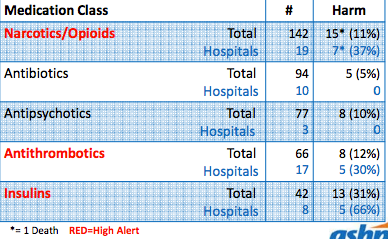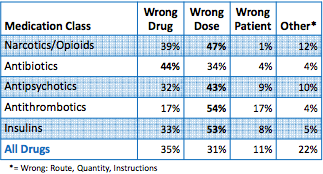Article
Which Medications Carry the Greatest Safety Risks?
Author(s):
The Institute for Safe Medication Practices works to identify the most prevalent medication safety issues and pinpoint effective strategies to reduce medication errors.
It’s crucial for pharmacists to be aware of medications associated with high risk for error and harm to patients, and to look for best ways to implement practices for improving safety and patient care.
The Institute for Safe Medication Practices (ISMP) works to identify the most prevalent medication safety issues and pinpoint effective strategies to reduce medication errors. Compiled data gathered from hospital medication error reports, risk assessments, consumer reports, and FDA collaboration have allowed ISMP to name the top medication classes involved in adverse events.
At a session held at the ASHP Midyear Clinical Meeting, ISMP revealed the medications most often reported for medication errors over the past year, with an emphasis on targeted strategies for safety practices.

Darryl S. Rich, PharmD, MBA, FASHP, medication safety specialist for ISMP, presented the top 5 high-alert medication classes based on data from 2016. Opioids, antithrombotics, and insulins topped the list, followed by antipsychotics and antibiotics. Rich noted that data pegged wrong dosage as the top reason for adverse events in most cases, except in the use of antibiotics, for which wrong drug was the top reason.

Opioids
ISMP’s data pointed to opioids as high-alert medications, noting that 47% of events involving opioids are related to wrong doses and that 39% are due to dispensing the wrong drug. Most cases involved dispensing the incorrect strength.
Key Strategies
ISMP recommends considering patient factors in prescribing, as well as assessing opioid tolerance and comorbidities. Other practices, such as limiting types and strengths available in the automated dispensing cabinet, providing readily available conversion dosing charts, and eliminating IR and ER abbreviations in drug descriptions, can also help curb opioid medication errors.
Insulin
Although opioids top the list in number of events reported, insulin leads in percentage of harm to patients: 31% of insulin-related events resulted in patient harm compared with 11% of opioid-related events. Fifty-three percent of insulin events involved the wrong dose, and 33% were due to wrong drug dispensing.
Key Strategies
ISMP recommends hospitals use U-500 syringes or U-500 pens rather than U-100 syringes or tuberculin syringes to mitigate conversion errors. Dr. Rich emphasized that hospitals can work with nursing departments to clarify proper dispensing methods and that ISMP does not recommend independent double check for subcutaneous U-100 insulin
Antithrombotics
According to data results presented at the session, 17% of adverse antithrombotic medication events occur due to wrong doses. These are often primarily because of wrong strength dispensed, pump errors, dabigatran administered by feeding tube, and unfamiliarity with new oral anticoagulation drugs. On the other hand, 39% of events are related to wrong drug dispensing.
Key Strategies
ISMP recommends becoming familiar with novel oral anticoagulants and other injectable anticoagulants, implementing mandatory pharmacy renal function evaluation for patients on new oral anticoagulants, and mandatory discharge counseling for patients.






